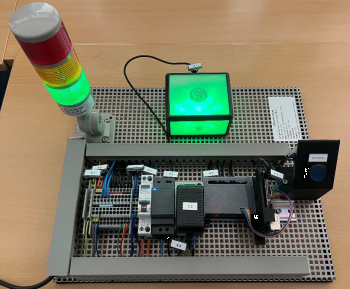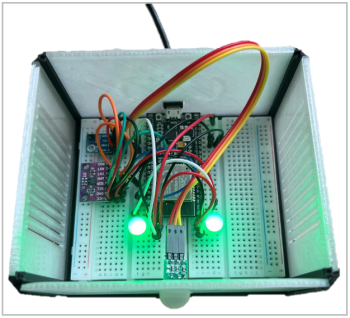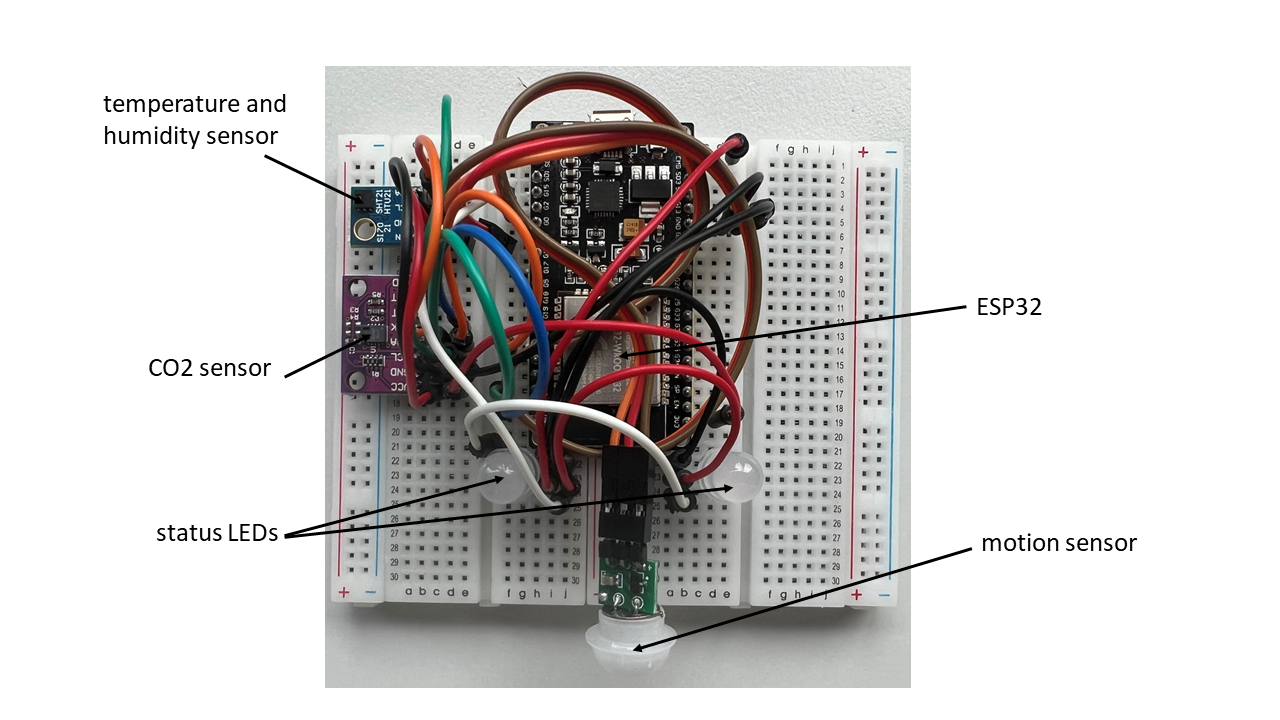Introduction and function


Figure: Construction of the plant, from Kai W. Figure: Internal structure of the Climate Cube, from Kai W.
Introduction
The measurement of temperature, humidity, CO2 levels, and occupancy in a room offers many advantages. It can contribute to creating a comfortable and healthy indoor environment, improving air quality, and reducing energy consumption. Monitoring these parameters can achieve optimal comfort, benefiting both humans and the environment. This is particularly important in residential and work areas as a good indoor climate affects people's well-being and health.
By capturing and storing this data in a database, trends and changes in the indoor climate over time can be recognized. This can help identify and address issues early on before they become more significant problems. The graphical representation of the data allows for easy understanding and interpretation at a glance.
Microcontroller technology is well-suited for implementing this project. The ESP32 supports a variety of sensors capable of measuring the mentioned parameters. The sensors can be easily connected to the ESP32's I2C interfaces, minimizing wiring complexity. Additionally, the ESP32 can transmit the sensor data to other devices, such as a Raspberry Pi. From there, the data can be processed, stored in a database, and visualized.
Function of the Climate Cube
The goal of the project is to measure the temperature, humidity, CO2 levels, and presence of individuals in a room. Sensors will be used, controlled and read by an ESP32 microcontroller. The sensors, along with the ESP32 and two status LEDs, will be assembled as a unit in a housing referred to as the "Climate Cube." The Climate Cube will transmit the sensor data to a Raspberry Pi. From there, the data will be uploaded to a database and displayed graphically. Additionally, the data collected by the sensors will be evaluated by the ESP32 or Raspberry Pi to detect abnormal conditions. These conditions can be indicated by a three-level warning light as well as the status LEDs on the Climate Cube and can be acknowledged later with a button.
There are three basic states distinguished, signaled by the colors red, yellow, and green. Green represents a normal state, yellow indicates a critical state, and red indicates a highly critical state. The conditions for each state are defined in the program code based on specific threshold values. In the normal state, both the three-level warning light and the Climate Cube will emit a steady green light. When a change of state occurs in the critical or highly critical range, the warning lights will blink in yellow or red until the state is acknowledged with the button. Afterward, they will emit a steady light in the respective color. Measures should then be taken to restore the state to normal. Once the values have normalized, the three-level warning light and the Climate Cube will emit a steady green light again.
Below is a picture where the several units of the Climate Cube are highlighted.

Figure: Components of the Climate Cube, from Kai W.